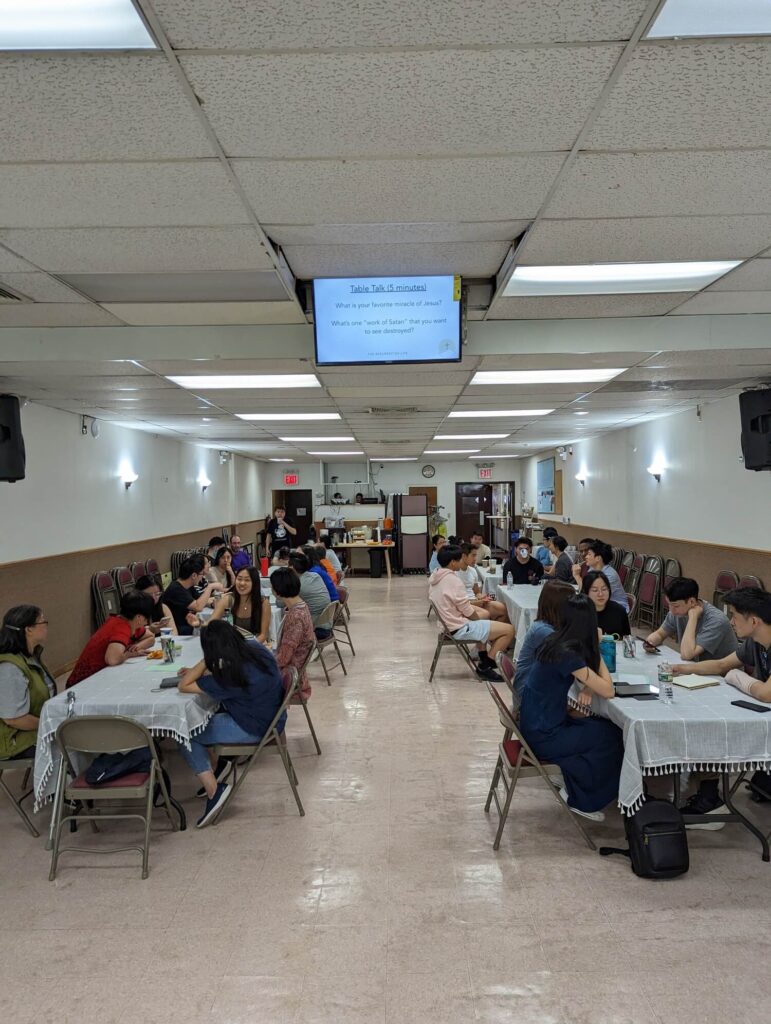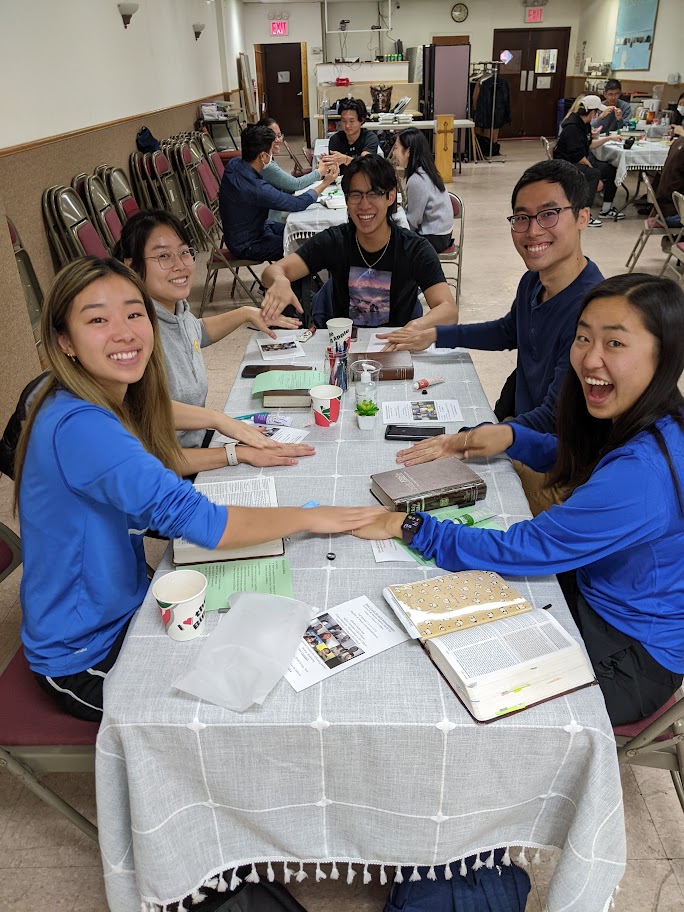What is the worst part of a church service? It’s when the worship leader forces us to turn and greet our neighbor. It can be awkward, shallow, and just physically weird as we sit in rows.
But what if this concept could be re-imagined, and turned into one of the best parts of a church service?
When we consider the early church’s discipleship and outreach, we see the radical teaching of “the priesthood of all believers” where the Holy Spirit is moving and transforming each congregant. There is a wonderful opportunity for mutual discipleship among a diversity of Christian siblings.
When we go to our modern-day churches, however, the physical “language” of the seating is to sit side-by-side, and face towards the “most important” people at the front. First imagine the experience for a newcomer. Most of their church time is facing people too far in the front to build a connection with—and the 30 seconds of forced greeting doesn’t feel genuine or lasting.
Now imagine an average faithful Christian congregant, on an average service. They listen to the worship and message. They’re processing the Word and hearing the Spirit. All this good stuff happens. But then the service ends, and a sudden flurry of activity happens! People rush past one another to say hi, leave, or go to lunch or a seminar—and no one is corporately discussing what God did in the service.
If people are talking, they’re usually catching up about life. They’re not sharing their conviction from the worship, or their next step from the sermon. And we lose a beautiful chance of mutual spiritual edification.
With all this, let me share with you the silly gimmick of Table Church NYC: We sit at tables.
Every Sunday, we set up six folded plastic tables that you can get at Costco. We place gray linen tablecloths on top and five chairs around each table. Before the service starts, all attendees can sit at a table, put their coffee down, and be a part of a physical space that allows for natural conversation. And for a newcomer, these tables are quite a familiar and comfortable sight!

In our services, we don’t have a forced greeting. Instead, at the beginning of the message, the speaker will kick off with an icebreaker question. For example, this Sunday, I’m preaching on God’s vision for the city. So to get people warmed up, I put on the PowerPoint: “How do you view NYC? You hate it? You love it? Why?”
I then verbalize that you can turn to your neighbor at your table now, share your name and answer the question together. There’s usually a pause of 10 seconds as people think, but then voices start to share, conversations and laughter start to erupt, and after five minutes, people are really building connections! And I just know that the introverts in the room are so thankful that they have a structured conversation rather than forced small talk. I’ll use the mic to give a one-minute warning, and after a total time of around 6-7 minutes of “table talk,” I invite everyone to turn their attention back to me as I continue with the sermon.
But we’re not done! An icebreaker is fun, but I want people to respond to God. To really wrestle with the Word, and process their personal thoughts. While some of us lean towards internal processing, many of us gain clarity when we externally process it outloud. So, I’ll add another “table talk” at the middle or end of the sermon.
Having it in the middle helps to get a gut check or conclude my first point. This can be useful when the first half of the sermon is about our brokenness or weaknesses since people will have already begun to process their thoughts and feelings; the gospel may hit even more personally in the second half.
Also, a middle-of-the-sermon table talk helps wake up all the low-attention span folks (I’ve never seen anyone sleep through this!) Finally, a table talk at the end of the message can be useful when we need to choose a specific next step, or I could keep it open with a question like “How do you want to respond to God?”
Now, you creative readers might be thinking that we don’t only need to do discussions—and you’re right! I’ve used table talk times for reading scripture or lectio divina, completing customized worksheets, and using objects for lessons. One time on a dry NYC winter, when I preached about Jesus washing each other’s feet, I instead gave everyone a little tube of lotion and asked each other to moisturize each other’s dry hands. It was silly awkward fun.

To conclude, here are some shortcomings you should be aware of:
- We have to take all the good and the bad that comes with conversations. That means people can be insensitive, bad listeners, and talk too much. Keeping that in mind, if I’m asking a question to share stories, I will always set one golden rule: Listen first and don’t give unsolicited advice. Most people listen to this rule, but I’ve had to have some gentle and firm conversations with individuals (but I still see this as a discipleship moment!) We also want to respect boundaries. Even with the lotion object lesson I shared above, I stated twice that if you don’t feel comfortable, you have full permission to decline.
- While table talks can generate discipleship conversations, they can’t replace intimate small group settings, where more consistent, vulnerable relationships can be nurtured, and where we can be more accountable to one another.
- Table talks may not fit every culture. For example, our church’s older, traditional Chinese service does not have table talks. However, they took the idea, and during their after-service lunch, they have a time to respond to the sermon together in a collective discussion!
I hope you can see the intent and critical thinking behind this simple format. I’m not trying to be hip or rock the boat. I’m trying to transform people unto Jesus, which is my passion and joy.
And I just have to be honest with myself: what truly works? What actually keeps people awake and engaged? How can I give everyone space to participate?
Whatever your context is, I hope our tables inspire you to think creatively about how to disciple your community.

